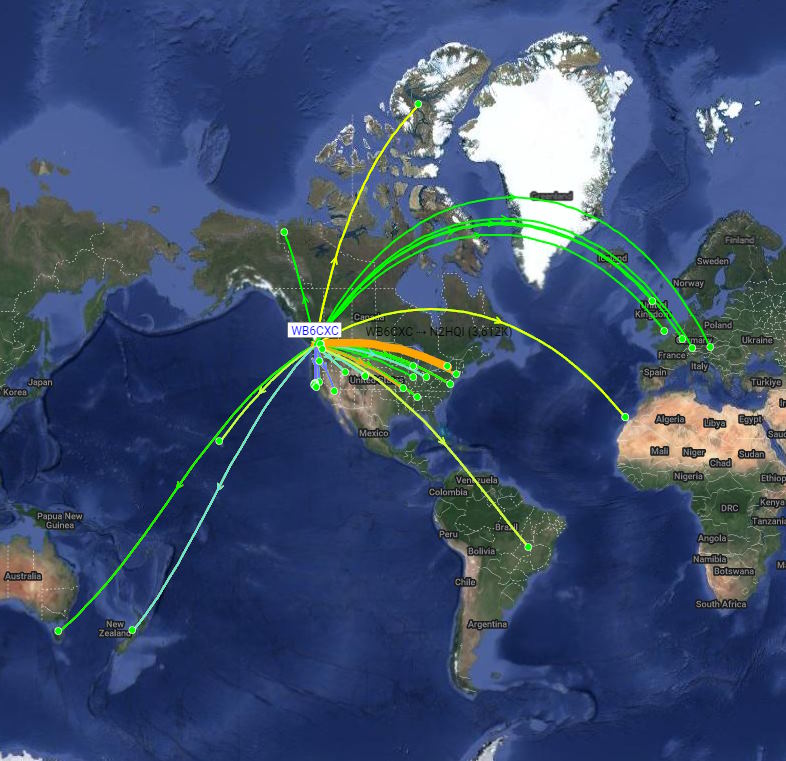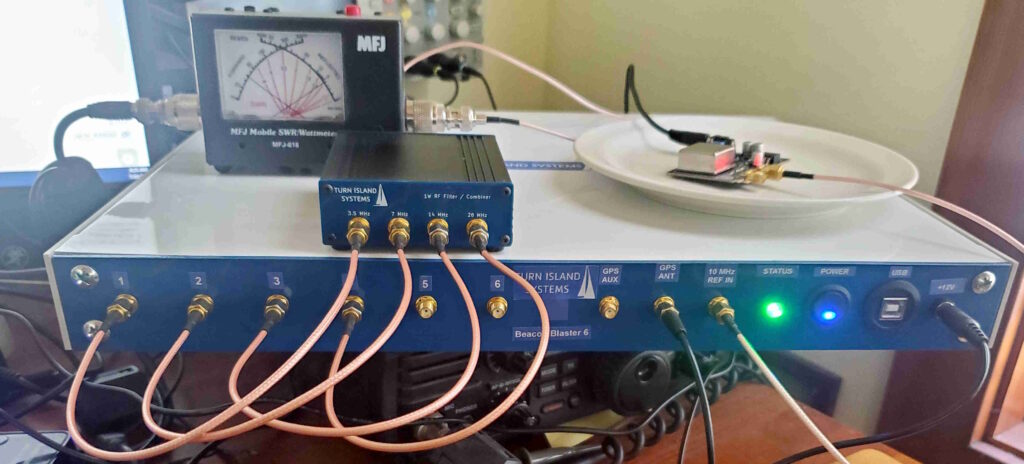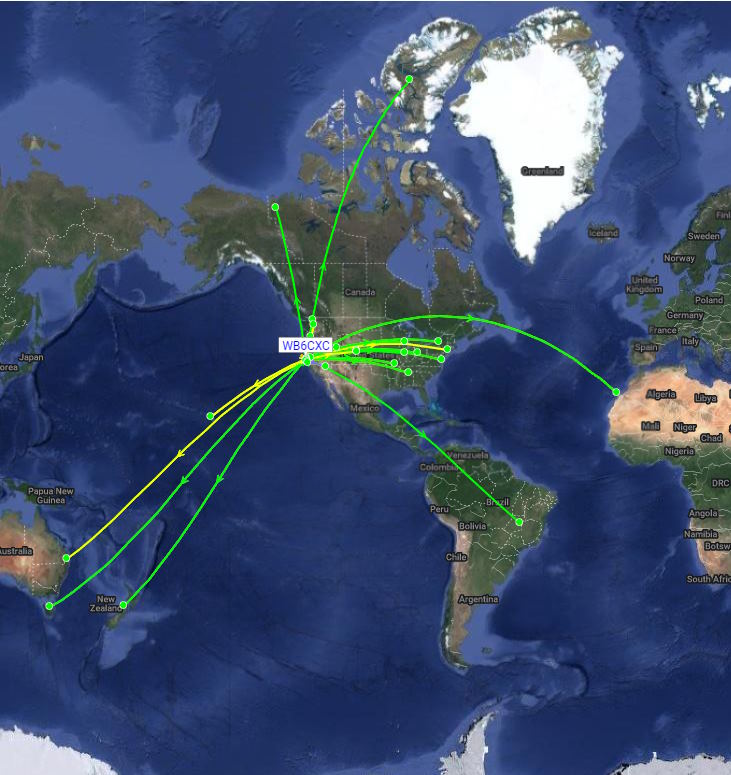While waiting for more chassis to arrive I’ve been testing the first two prototypes and the results are excellent. Prototype #1 has been running in Friday Harbor for a few weeks, using the filter/combiners to feed two antennas. Both antennas are Off-Center-Feed dipoles (which provide good matching on octave-spaced bands, rather than the third-harmonic spacing of a center-fed dipole). One antenna is for 80/40/20/10 meters, and the other is for 30/15 meters. The one Watt signals on the six transmit frequencies have been received by every known FST4W-120 receiver on the planet:

Prototype #2 has also been running, using my site near Bodega Bay, California:

This one is driving a single OCF Dipole designed for 40/20/10 meters. I am also connecting an 80 meter transmit channel to this antenna — a *very* lousy match, but it is still being received far and wide. You may be wondering about the module sitting on the saucer; rather than use a GPSDO at this location I decided to use a cheap surplus 10 MHz OCXO for the reference clock. You can also see the four-band filter/combiner connected between the BeaconBlaster and the SWR meter (and then the antenna). Here’s a typical day’s propagation for this one:

These propagation charts may not look very impressive when you compare them do typical WSPR reports, but remember, there are actually very few FST4W receiver sites in operation. Work is being done to upgrade WSPR signal monitoring software, but for now FST4W is really the only game in town for collecting accurate Doppler spreading data needed for atmospheric propagation research. Anticipating upcoming WSPR upgrades, the BeaconBlaster will be WSPR-capable very soon.
So progress is being made. Enough subassembly boards are available to build a few more units, and more boards are on the way. The new chassis should look a bit more professional as well. Full details will be coming soon (I promise!)
